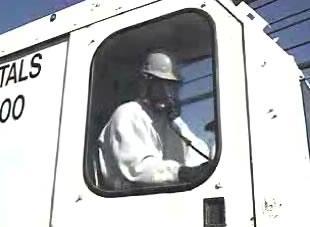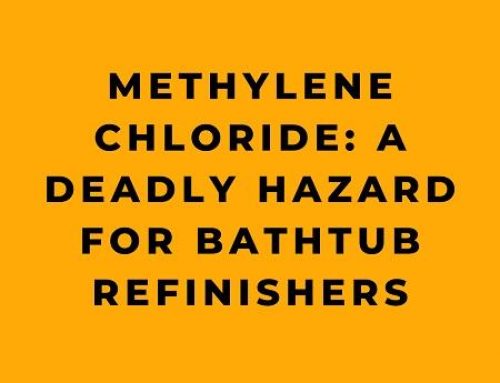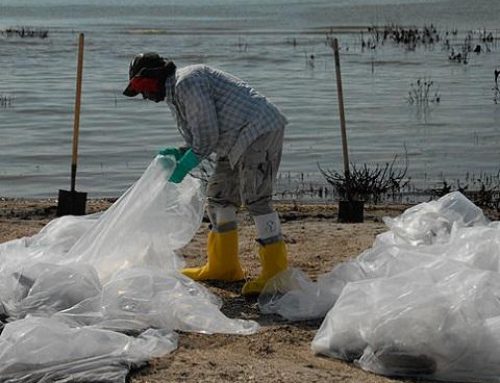Respiratory protection is a crucial component of a successful Hazardous Waste Operations and Emergency Response (HAZWOPER) program. Respirators help protect workers from inhaling hazardous substances or contaminated air, which can have serious health consequences. In this article, we’ll provide an overview of respiratory protection and offer some helpful tips for businesses looking to implement it.
What is Respiratory Protection?
Respiratory protection refers to the use of respirators to protect workers from inhaling hazardous substances or contaminated air. Respirators are designed to filter out harmful particles or gases, and come in a variety of types and sizes to fit different needs and hazards.
Why is Respiratory Protection Important?
Respiratory protection is important because it helps protect workers from inhaling hazardous substances or contaminated air, which can have serious health consequences. Inhaling hazardous substances can cause short-term effects such as irritation or coughing, as well as long-term effects such as cancer or respiratory diseases. By wearing a respirator, workers can reduce their risk of inhaling hazardous substances and protect their health.
In addition, the use of respiratory protection is often required by law or regulatory agencies, such as the Occupational Safety and Health Administration (OSHA), as a means of ensuring the safety of workers and the general public.
Tips for Implementing Respiratory Protection
Here are 10 tips to help your business implement effective respiratory protection:
- Determine the need for respiratory protection: Carefully assess the risks and hazards in your workplace to determine what type of respirator is needed.
- Choose the appropriate respirator: Select the appropriate respirator for the specific hazards and risks involved in your business. This may require consulting with experts or testing different options to find the best fit.
- Train employees on how to use the respirator: Proper training is crucial to ensure that employees know how to properly use the respirator and follow the proper procedures.
- Ensure that the respirator fits properly: Proper fit is important to ensure that the respirator is effective and comfortable for the worker.
- Properly maintain and replace the respirator: Regularly maintain and replace the respirator to ensure it is in good working condition and effective at protecting workers.
- Follow established protocols: Follow established protocols for using the respirator to ensure consistent and reliable protection for workers.
- Keep thorough records: Maintain thorough records of all respirator usage and maintenance activities.
- Review and update the program as needed: Periodically review and update your respiratory protection program to ensure it is still effective and in compliance with any changes in relevant laws and regulations.
- Involve employees in the selection process: Involving employees in the selection of respirators can help ensure their buy-in and support for the program.
- Consult with experts: If you are unsure of the best respirator options for your business, consider consulting with experts or regulatory agencies for guidance.
It’s worth noting that respiratory protection is just one part of a successful HAZWOPER program. Other key elements include personal protective equipment, monitoring procedures and equipment, and emergency response planning. To ensure the safety of your workers and compliance with regulatory requirements, it’s important to have a well-rounded program that addresses all of these areas.
In addition, it’s important to regularly review and update your HAZWOPER program to ensure it is still effective and in compliance with any changes in laws or regulations. This may involve conducting regular safety audits or consulting with experts to identify any areas that may need improvement.
Overall, respiratory protection is a crucial part of a successful HAZWOPER program. By implementing effective respiratory protection and regularly reviewing and updating your program, you can help protect the health and well-being of your employees and the community.
References:
- Occupational Safety and Health Administration (OSHA). (n.d.). Hazardous Waste Operations and Emergency Response (HAZWOPER). Retrieved from https://www.osha.gov/laws-regs/regulations/standardnumber/1910.120
- Centers for Disease Control and Prevention (CDC). (n.d.). Occupational Safety and Health Guidance Manual for Hazardous Waste Site Activities. Retrieved from https://www.cdc.gov/niosh/docs/81-123/
- Environmental Protection Agency (EPA). (n.d.). Hazardous Waste Operations and Emergency Response (HAZWOPER). Retrieved from https://www.epa.gov/hw/hazardous-waste-operations-and-emergency-response-hazwoper
Supplementary Material:
- Occupational Safety and Health Administration (OSHA). (n.d.). Personal Protective Equipment (PPE). Retrieved from https://www.osha.gov/SLTC/personalprotectiveequipment/index.html
- Occupational Safety and Health Administration (OSHA). (n.d.). Respiratory Protection. Retrieved from https://www.osha.gov/SLTC/respiratoryprotection/index.html
- National Institute for Occupational Safety and Health (NIOSH). (n.d.). Respirator Selection: Self-Contained Breathing Apparatus (SCBA). Retrieved from https://www.cdc.gov/niosh/npptl/topics/respirators/disp_part/respsca.html
- World Health Organization (WHO). (n.d.). Personal Protective Equipment (PPE). Retrieved from https://www.who.int/publications/i/item/9789241548433
Do you need HAZWOPER Online Training?
Try a free demonstration of HAZWOPER: Respiratory Protection
Excerpt from our Understand HAZWOPER Online Training Course
The following outline summarizes the major points of information presented in the program. The outline can be used to review the program before conducting a classroom session, as well as in preparing to lead a class discussion about the program.
While HAZWOPER covers a lot of ground, one of the most important messages that it has for us is that you are only as safe as the air you breathe!
— Most of us don’t think twice about breathing… but it’s the last thing that you can take for granted when you work with hazardous substances.
Contaminated air can:
— Burn your throat and lungs.
— Damage your brain, liver, kidneys or other organs.
— Even smother you to death.
OSHA’s HAZWOPER Standard requires workers to use proper respiratory protection to prevent tragedies like these.
How can you know what respiratory hazards you’ll face where you work?
— Answering this can be difficult because hazardous materials come in many forms and some of them cause health problems that are not immediately obvious.
— To detect dangerous airborne contaminants, your safety department will run various tests on your work area.
If hazardous conditions are found, your company may be able to do several things to address them, such as:
— Installing processing systems to filter the air.
— Setting up emergency respirator stations to protect workers if an accident releases pollutants into the atmosphere.
Engineering controls, like pressurized cabs, can also often be used to keep employees isolated from airborne contaminants.
Environmental controls can also reduce airborne contaminants.
— For instance, spraying water on dry, dusty surfaces will limit the number of particles that float through the air.
— But even with defenses like these in place, you and your coworkers may need respirators to work safely.
Wearing a respirator is such a critical safety issue that you must be fully trained and authorized by your company before you are allowed to use one.
— In fact, if you suffer from a heart condition or asthma, you should not work in areas where respirators are necessary, unless you have proper medical clearance.
Once a licensed healthcare professional clears you for respirator use, you will need to select one that is right for the work you will be doing. Respirators are available in three basic types:
— Ones that filter the air you breathe.
— Those that purify air through chemical means.
— Ones that provide their own sources of clean, breathable air.
OSHA’s “Assigned Protection Factors” (APFs) will help your employer determine what respirator should be used in your work environment.
— APFs indicate how much protection various types of respirators provide.
— In most situations, an air-filtering respirator is what will be called for.
In areas where low levels of dust are the primary respiratory problem, a disposable mask is usually the way to go.
— Here, fibers in the mask trap and hold particles.
— To get a proper fit, adjust the metal strip to conform with the bridge of your nose.
— Make sure the straps are not tangled, and that they are placed correctly around your head… one below your ears, the other above them (this creates an even tension on the mask, and provides the best seal).
— When your mask becomes clogged with dust, throw it away and get a new one.
In areas where hazardous chemicals are present, more protection is required.
— In many situations, air-filtering respirators will be necessary.
The National Institute for Occupational Safety and Health (NIOSH) has created a classification system for respirator filters that helps you to determine which type is best for your situation.
NIOSH designates three filter classes, based on whether there are oil-aerosols present on the work site.
— Oil-aerosols can be particularly damaging to respirators, because it can easily clog a filter and not let air through.
— If the material in the air does contain oil-aerosols, you must use a filter that is coded P, for “oil-proof”, or R, for “oil-resistant”.
— If no oil-aerosols are present you can use an N-coded filter for “not oil-proof”.
Whatever type of filter you are using, make sure that you follow the manufacturer’s recommendations for the length of time you are permitted to breathe through the filter, and replace it with a fresh one as needed.
After your employer has determined whether you should use P, R or N-series filters, you will need to decide what filter efficiency rating to use.
— Ratings following the P, R, and N designations on filters tell you their efficiency in percentages.
— These are listed as 95, 99 and 99.7 % (which is referred to as 100%).
The higher the number, the greater the efficiency.
— However, it is more difficult to breathe through higher-efficiency filters, so don’t use a filter that is more efficient than you need.
— Talk to your supervisor to see which filter strength you should use.
If you are working in dusty areas, you may want to add a pre-filter, which traps particles before they clog the cartridge filter.
In areas where hazards could also affect your eyes or skin, using a full-face mask respirator will increase your protection by covering your entire face.
Sometimes, when the atmosphere is so contaminated that it cannot be filtered, air-purifying respirators don’t offer enough protection.
— In these cases, respirators that supply their own air are necessary.
These come in two types:
— “Supplied air respirators” (SARs), which are attached to a compressor that provides air through a long hose.
— “Self-contained breathing apparatuses” (SCBAs), which allow you to carry an air supply with you, in a tank on your back.
— They each have advantages and disadvantages.
When you use an SAR, you are tethered to a compressor that supplies fresh, breathable air.
— This limits your mobility, but allows you to do jobs that take extended lengths of time… because the air an SAR supplies can be replenished indefinitely.
— When your SAR air tank runs low, the attendant monitoring your compressor can switch you over to a full tank… with no interruption in the air flowing to you.
SARs are often used by support personnel at HAZMAT sites.
— If you were on a decontamination crew in a Contamination Reduction Corridor (CRC), you would probably use an SAR.
— This is because you might be performing decontamination activities for over an hour at a time.
SCBAs, on the other hand, are used in places where you need a maximum amount of mobility… and have a job to do that will probably not take much longer than half an hour.
— An SCBA’s air supply is limited to what you can carry with you.
— SCBAs are often used by crews surveying HAZMAT sites for the first time.
— When characterizing a site, you need the freedom to climb, crawl, and travel hundreds of feet, if necessary.
— You would probably not remain in one area for very long, because you usually have a lot of ground to cover.
However, because of their weight (which can exceed 30 pounds) and the limited amount of air they allow you to carry, SCBAs can also be more difficult to use than SARs.










